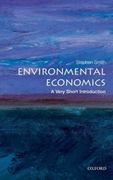Question
1.In economics, money refers to A) income. B) wealth. C) assets used and accepted as payment. D) currency. 2.The use of money is more efficient
1.In economics, money refers to
A) income.
B) wealth.
C) assets used and accepted as payment.
D) currency.
2.The use of money is more efficient than barter because the introduction of money
A) reduces the need for economic specialization.
B) reduces the need to exchange goods.
C) reduces the need for other stores of value.
D) reduces transaction costs.
3.One of money's primary roles in the economy comes from the use of money to transfer purchasing power to the future. This role of money is called
A) store of value.
B) unit of account.
C) medium of exchange.
D) standard of deferred payment.
4.Why do people keep currency in their pockets when bank saving deposits pay interest?
A) Because banks might steal your money.
B) Because currency is more liquid.
C) Because bank saving deposits lose value due to inflation.
D) Because bank saving deposits lose value due to changes in interest rates.
5.M1 does not include
A) Money market mutual funds.
B) travelers' checks.
C) currency.
D) transaction accounts.
6.Which of the following statements about M1 and M2 is not true?
A) Transaction accounts are part of M1.
B) M2 is more liquid than M1.
C) M2 is larger than M1.
D) Transaction accounts are part of M2.
7.M2 does not include
A) Treasury bonds.
B) Money market deposit accounts.
C) small-denomination time deposits.
D) M1.
8.Suppose that you take $500 out of your savings account and put it in your checking account. Holding other things constant, what is the overall effect on M1 and M2?
A) M1 rises by $500, M2 falls by $500.
B) M1 is unchanged, M2 is unchanged.
C) M1 rises by $500, M2 is unchanged.
D) M1 is unchanged, M2 falls by $500.
9.What's the most common way for a central bank to reduce the money supply?
A) Collect higher taxes
B) Sell bonds to the public
C) Buy bonds from the government
D) Buy bonds from the public
10.You are putting together a portfolio of assets. The four most important characteristics of the assets you will choose are expected return, time to maturity,
A) risk, and liquidity.
B) risk, and collateral
C) risk, and reward.
D) liquidity, and standard issue size.
Step by Step Solution
There are 3 Steps involved in it
Step: 1

Get Instant Access to Expert-Tailored Solutions
See step-by-step solutions with expert insights and AI powered tools for academic success
Step: 2

Step: 3

Ace Your Homework with AI
Get the answers you need in no time with our AI-driven, step-by-step assistance
Get Started


